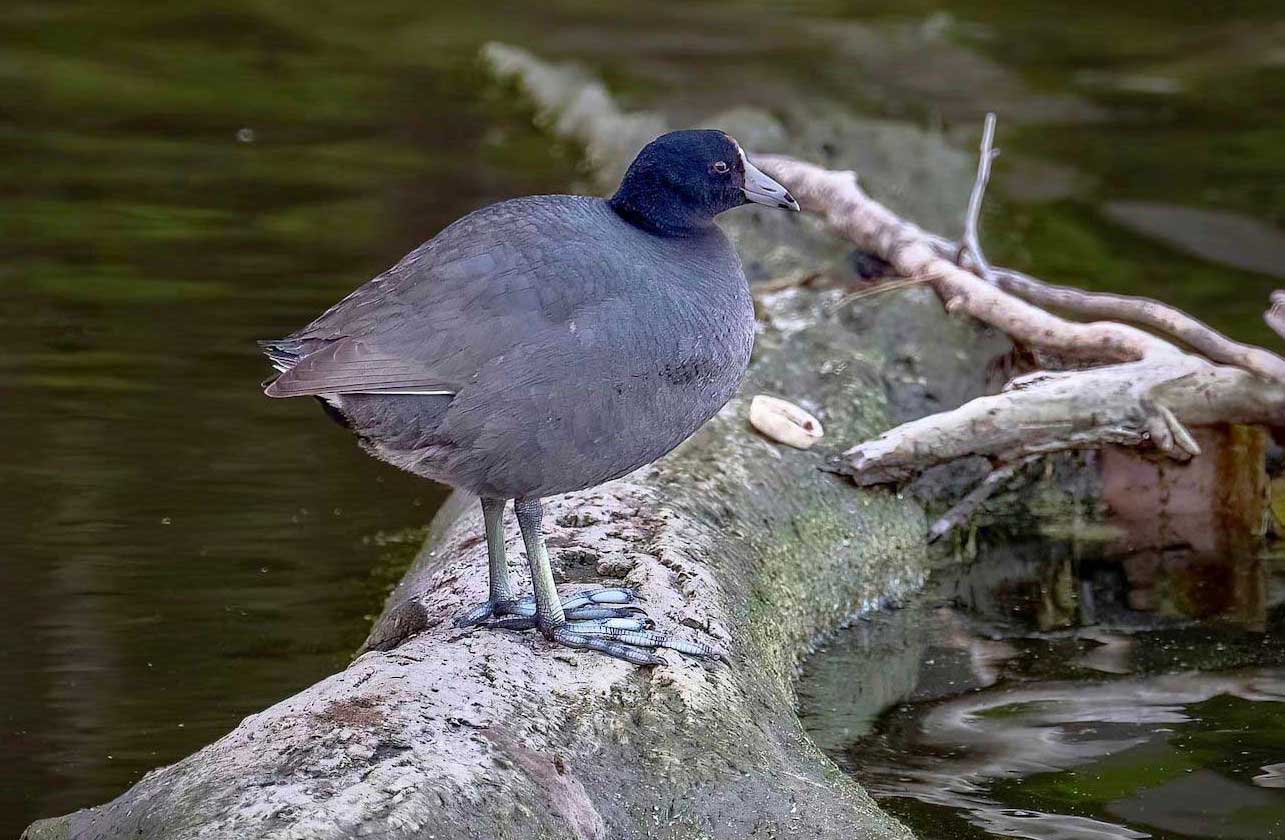Odd duck out: Coots share space with ducks, but aren't closely related

American coots might look like an odd duck among ducks, but that's for good reason. Coots aren't ducks. And it isn't really a case of coots looking like ducks, because a coot looks more like a chicken than a duck. What coots and ducks do have in common is where we see them.
Coots, which belong to the rail family of birds, have all-black or dark gray feathers, but their bills and foreheads are a contrasting bright white, according to the Cornell Lab of Ornithology. If you can get a close look, you might notice a small patch of deep red where the white bill and forehead meet the feathers on their head. Their eyes are red in color too. Out of the water, you'll see their greenish-yellow legs, and you'll see that their bodies are more plump and rounded than a duck's. It's also out of the water where you will notice their resemblance to a chicken.
Like ducks, we typically see American coots swimming on our lakes, ponds and rivers. They prefer marshy areas and spend a lot of time in the water. But they don't have webbed feet to help them swim like mallards and other ducks do. Webbed feet are one of the things that makes a duck a duck, but coots rely on lobed toes instead of webbed feet to help them swim. Each of a coot's four long toes — three that face forward and one facing backward — have wide lobes that help them swim. On land, the lobes fold back when they lift their feet, making it easier for them to get around, the Cornell Lab reports.
One thing coots do have in common with ducks, at least mallard ducks, is their diet. Both coots and mallards are omnivores, eating both plant and animal material. However, both mostly eat vegetation, according to the Cornell Lab. In the water, coots eat algae, duckweed, aquatic grasses, cattails and waterlilies, among other plants. On land, they will eat leaves and grains along with other plants. They'll also eat a variety of insects and crustaceans and sometimes even small amphibians like salamanders and tadpoles.
Coots also eat like ducks, both dabbling and diving ducks. When eating, dabblers upend themselves, dipping their heads below water to find food, while diving ducks fully submerge themselves underwater while on the hunt for food, according to Ducks Unlimited. Coots will both dabble and dive while foraging for a meal. They will also sometimes steal food from ducks, the National Audubon Society reports.
In flight, coots aren't quite as smooth and elegant looking as mallards and other ducks. From the water, they will flap their wings rapidly, essentially running across the water as they try to become airborne, the Audubon Society reports. In flight they are clunky in appearance, looking as though they have to work hard flapping their wings to stay airborne.
Coots are migratory, so they are in northern Illinois during breeding season, arriving each spring from the southern United States and Central America where they overwinter, according to Cornell Lab. Males will perform courtship displays to woo a female mate, and then the pair will construct a nest, weaving together plant material, usually in dense vegetation located in or near water.
Females can lay one or two broods a year, with between six and 12 eggs in each brood, the Audubon Society reports. Both the female and male share in incubating the eggs, which hatch after 21 to 25 days. Just after hatching, the coots are mostly dark in color but with bare red spots on their heads and red bills, along with some rusty, orangish downy feathers around their heads. Juvenile coots are more grayish than their adult counterparts, and they have darker bills.
The young coots can swim soon after hatching but will follow their parents around in the water, relying on them for food. They learn to fly by the time they are about 2 months old, at which time they are fully independent and leave their parents.
